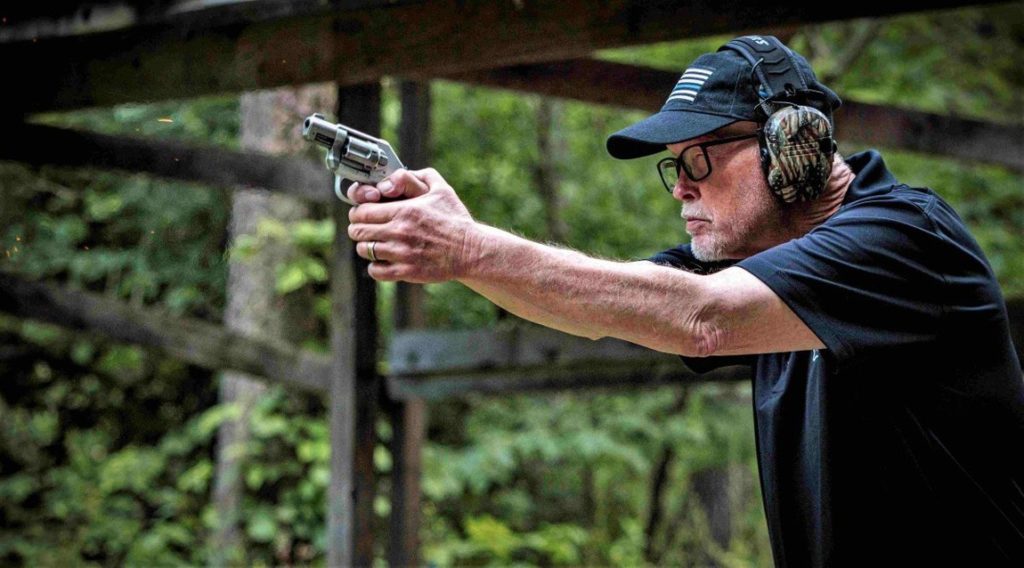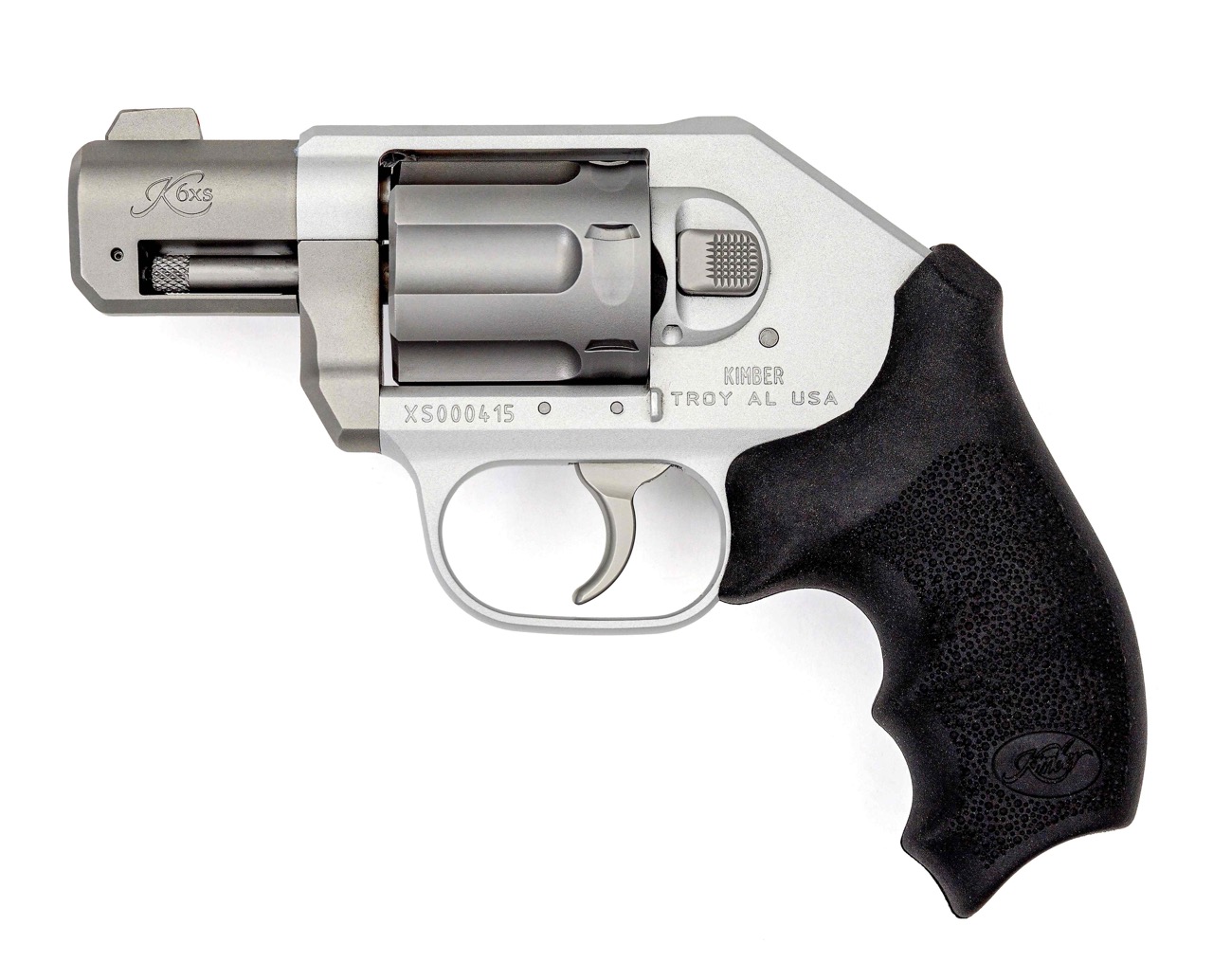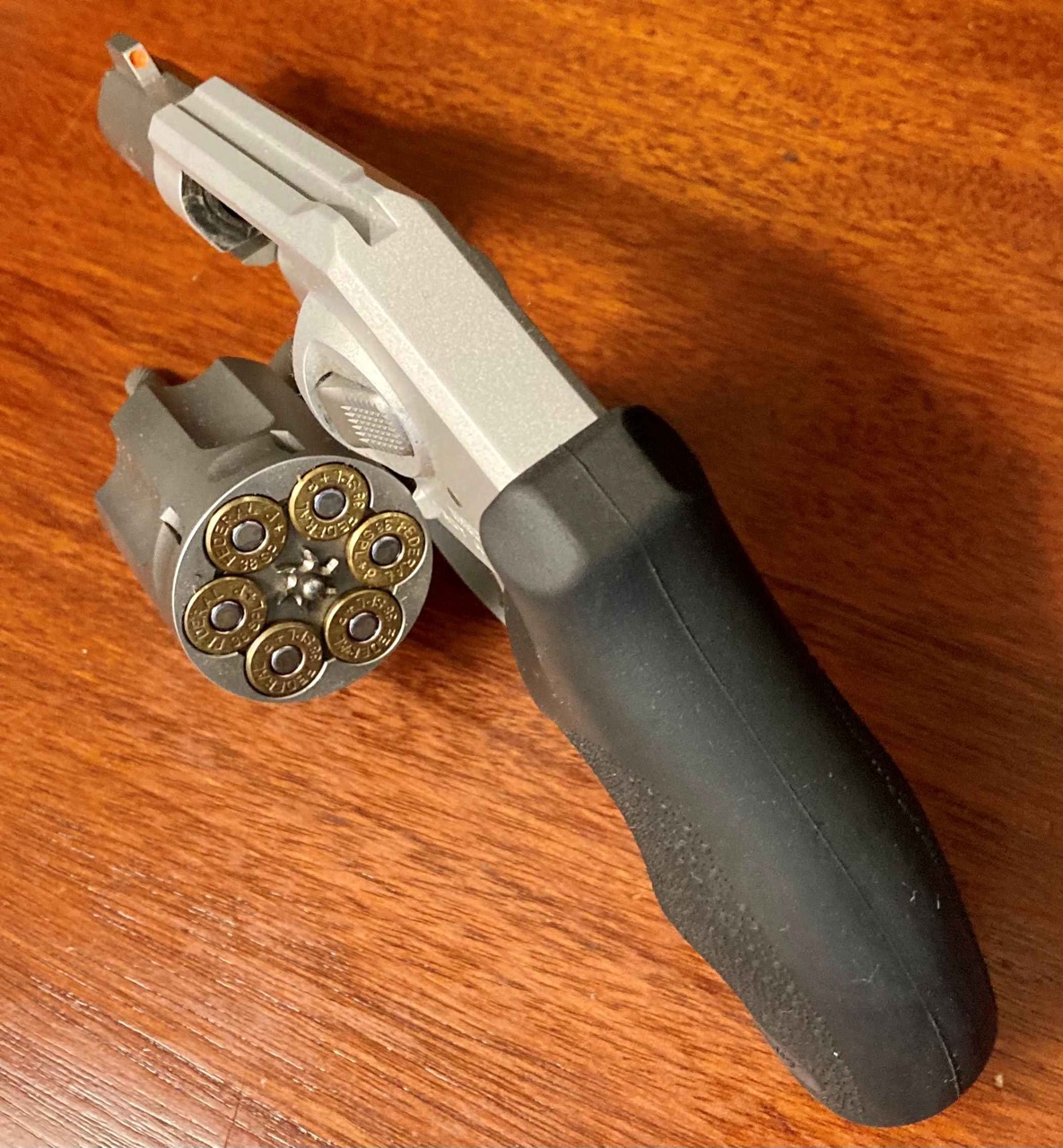Photo Credits: Jordan Bell
This time of the year in my neck of the woods it is hot and humid. Yesterday for example the high was 95° and with the humidity level, it felt like 105°; in other words, it was just plain miserable weather. But, if you’re like me, neither heat, rain, sleet, hail, snow or dark of night, prevents me from carrying a handgun for defense. Granted it is a bit easier when temperatures are milder and allow clothing better suited to concealment, but there are ways to beat the heat and still carry a reasonably effective handgun. My summer “uniform” is generally cargo shorts with a stout belt, and tucked-in tee-shirt, which is layered over by an unbuttoned Hawaiian shirt. This serves to conceal my handgun inside an OWB holster and is still comfortable. However, if it’s 95° and 85% humidity, I might dispense with the outer shirt and wear just the tee-shirt outside the shorts. This calls for a change in carry gear, which in my case means a pocket holster. To me, nothing works better in a pocket holster than a small double action (DA) revolver.
Some will no-doubt opine, “A small DA revolver? Hey pop, it’s the 21st Century.” OK, so I’m a “Boomer.” I cut my teeth on revolvers and carried one as a duty gun in law enforcement for some 15 years. I am both comfortable and competent with a “wheelgun.” For pocket carry, the contours of the revolver make it just right. For several years I carried a Smith & Wesson Model 42, then a 442, which are both J-frame, “Airweight” snubs, with a concealed hammer. Then one day, I was in a LGS and came upon a used Colt Agent, which like my Smiths, had an aluminum-frame and was chambered in .38 Special. I liked the fact that it had a true 2” barrel, the sights were easier for me to see, and it was a six-shooter instead of a five-shooter. It soon found its way on my side. My one trepidation was its exposed hammer spur, which was apt to catch in pocket lining or loose clothing. I flirted with the idea of a hammer shroud, but didn’t want to drill the frame. Finally, I bought a spare hammer and had a gunsmith remove the hammer spur and fit it into my Colt Agent.
My Colt Agent is circa 1969, made just as Colt was changing the design, so it has the old-type exposed ejector rod. Colt quit making the Agent in 1972, so there are no more. Mine was almost pristine when I acquired it, but the aluminum frame with its black anodized finished is definitely showing some holster wear, so I began to consider carrying something else. At the NRA Annual Meeting this year (2023) I stopped at the Kimber booth as I’d received a press release just prior to the NRAAM that their new K6s “Carry” model was going to debut. I’d caught wind of this development a few months earlier, but Kimber wasn’t saying much. At their display area, I picked up what they were now calling the K6xs and instantly fell in love. Basically, the new “Carry” is a K6s, but with an aluminum alloy frame. Because of this, it isn’t a .357 Magnum like the K6s, but is rated for .38 Special +P cartridges. This gave it a definite advantage over my old Colt Agent as I would not shoot +P ammo in the vintage sixgun. The frame has a silver KimPro II finish, while the cylinder, 2” barrel, crane, cylinder latch and trigger are stainless steel, and have a darker gray bead-blasted finish. This gives it the “Pinto” effect. Also, unlike the K6s, the K6xs has a fixed rear sight integral to the top-strap. The front sight is a partially slanted patridge-style, with a red dot insert. To reduce the weight of the revolver, there is a cut-out on the right side of the barrel underlug, deeper flutes in the cylinder, and even the rear of the trigger is hollowed-out. Whereas the concealed hammer K6s weighs 23 oz. empty, the K6xs weighs just 15.9 oz.
Like Ruger revolvers, the Kimber K6xs has a push-in activated cylinder release latch, with no sharp edges to lacerate your thumb. The trigger pull is smooth and non-stacking, with a factory-set pull weight of 10-12 Lbs. I found as you pull back the trigger, right at the end of the pull is a discernable “snick” that lets you hesitate for a split second and almost get a single action type pull at the end. The smooth-faced trigger is also about 0.75” wide, which makes the pull seem lighter. In consideration of the light weight of the K6xs, Kimber has fitted it with Hogue black rubber “cobblestone” grips with finger grooves. They are hand-filling, comfortable, and compatible with speed-loaders. They certainly provide good recoil and muzzle-flip control for fat follow-up shots. I also noted the rear of the cylinder is rebated to enclose the cartridge case heads, with today’s solid head cases this is not really necessary, but it does allow the cylinder window in the frame to be just a “teence” shorter. Overall, fit and finish were spot on.
Since I can use .38 Special +P in the K6xs, I decided to use all defensive-type ammunition with lighter-weight bullets for my test and evaluation (T&E). The lightest bullet load in my ammo locker was the Critical Defense Lite from Hornady; it has a 90 gr. JHP-FTX projectile. The hollow bullet nose features Flex Tip technology to eliminate clogging, which stymies expansion. The copper jacket is also striated at the nose to enhance bullet expansion. Next, is the Black Hills Honey Badger; it’s +P rated and the monolithic copper bullet weighs 100 gr. This load doesn’t rely on expansion for stopping power, but its Xtreme Defense bullet has a fluted X-shaped nose, that provides penetration combined with hydraulic energy pressure for incapacitation. I also had some vintage Winchester Super-X 110 gr. JHP +P cartridges with a large hollow point and exposed lead nose. With a 120 gr. JHP at +P pressures, my next load was Federal Punch, an increasingly popular round. Finally, I had a box of early-production Speer Lawman ammo with their 125 gr. Gold Dot HP bullet at +P velocities.
As I knew the K6xs was going to end up in my pocket a lot, I carried it to the range in my tried-and-true Mika Pocket Holster, which I began using in 1989. It is made of a black “Naugahide” type material that protects the gun from moisture and has a suede lining inside. It’s reinforced at the top to stay open after the handgun is withdrawn and a wide strip of a tactile material is sewn around the outside to grip the pocket lining. I’ve never had the holster come out with the gun during a fast draw. I failed to mention that the K6xs comes in a nice gray nylon zippered case ad inside it is a DeSantis Gunhide Quik-Strip for extra ammo. This came along with me too. I also brought along some HKS size 10-A speedloaders that are made for S&W K-frame .38/.357 revolvers, they seemed to fit OK when I tried them at home.
At the range I first ran all the test ammo through the Kimber K6xs 2” barrel to see what kind of velocities my chronograph would show. The data is in the accompanying table. I was pleased to see the lowest velocity figure was above 850 FPS. Next, it was paper punching time; I set my target stand out at 12 yards considering the K6xs sighting radius and DAO trigger. My targets were oval-shaped bullseyes with orange center aiming circles. Shooting was done seated, from the bench, using a sandbag rest. Shooting was done in alphabetical order starting with the Black Hills Honey Badger cartridges. Knowing light bullets usually impact a bit low, I aimed a couple of inches over the orange circle and scored mostly center hits. I noted when the Honey Badger bullets hit the paper, they make a blown-out X-shape instead of a round hole. I shot three 5-shot groups with each test cartridge. My best 5-shot group measured 1.29” using the Federal Punch load. Group averages ran from 2.10” to 3.31” and the remainder of the information is in the performance table.
To evaluate how the K6xs “Carry” would do in a self-defense scenario, I loaded it, then placed it in the Mika Pocket holster and shoved it in my right pocket of my Wranglers. The DeSantis Quik-Strip was loaded and put inside the small watch pocket of the jeans. I then put up a realistic bad guy with a gun target, complete with scoring zones. The ammunition that I elected to use the Speer 125 gr. GDHP +P cartridges. I had 24 rounds on me and loaded the revolver and Quik-Strip as needed. I decided to draw and fire 6 shots, strong hand only, from 3 yards, then reload and move back to 7 yards. There, I drew and fired from an isosceles stance, two-handed, 2 shots center-mass. I did this twice more and reloaded. At the same distance, I did a failure/body armor drill; 2 shots center-mass and 1 to the head. I did this twice and reloaded. Then at 15 yards, I shot from behind a barricade. Two shots left-side, standing, 2 right-side, standing and 2 right-side kneeling. The target had numbered scoring zones, and out of 120 possible points, I scored 100, with 5 shots in the 4-zone on the right side of the chest. My two headshots were in the right eye and just above the left eye, both 5’s.
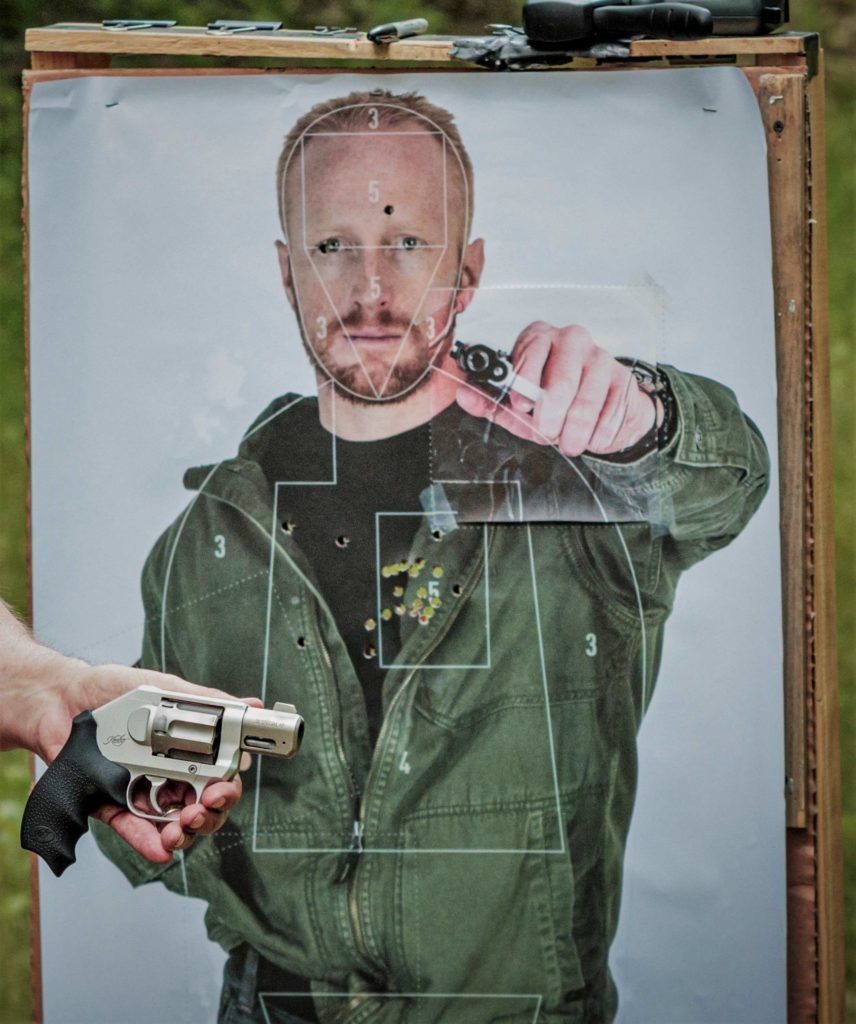
I started my draw during each stage with my hand inside my pocket. I had no trouble with snagging withdrawing the revolver, but it takes some care returning it to the holster. Best to remove the holster and insert the gun, then return it to the pocket. I’ve had a great deal of experience using Quik-Strips and can do a 2x2x2 reload quickly. The HKS 10A speedloaders I tried were just a tad oversized for the K6xs cylinder and the rounds wanted to bind if I inserted them too far into the chambers and then the release knob wouldn’t turn. I think I’d order the ones made for the K6s revolvers that are sold through Kimber, if I decided to use speedloaders.
The Kimber K6xs ran famously. The DAO trigger smooth and didn’t throw off my aim. The sights were easy to acquire and as I’ve already said, the Hogue grips fit my medium-sized hand to a ‘T’. They really absorb recoil, allowing fast follow-up shots, even with a one-pound gun. I had no trouble kicking the empty brass out with the relatively short ejector rod, using the proper technique. The press-in cylinder release latch functioned well and didn’t bite me. After running this T&E with the K6xs, I think it’s time to hang up my old Colt Agent .38 Special and adopt the Kimber “Carry” as my new EDC. For more information go to: www.kimberamerica.com
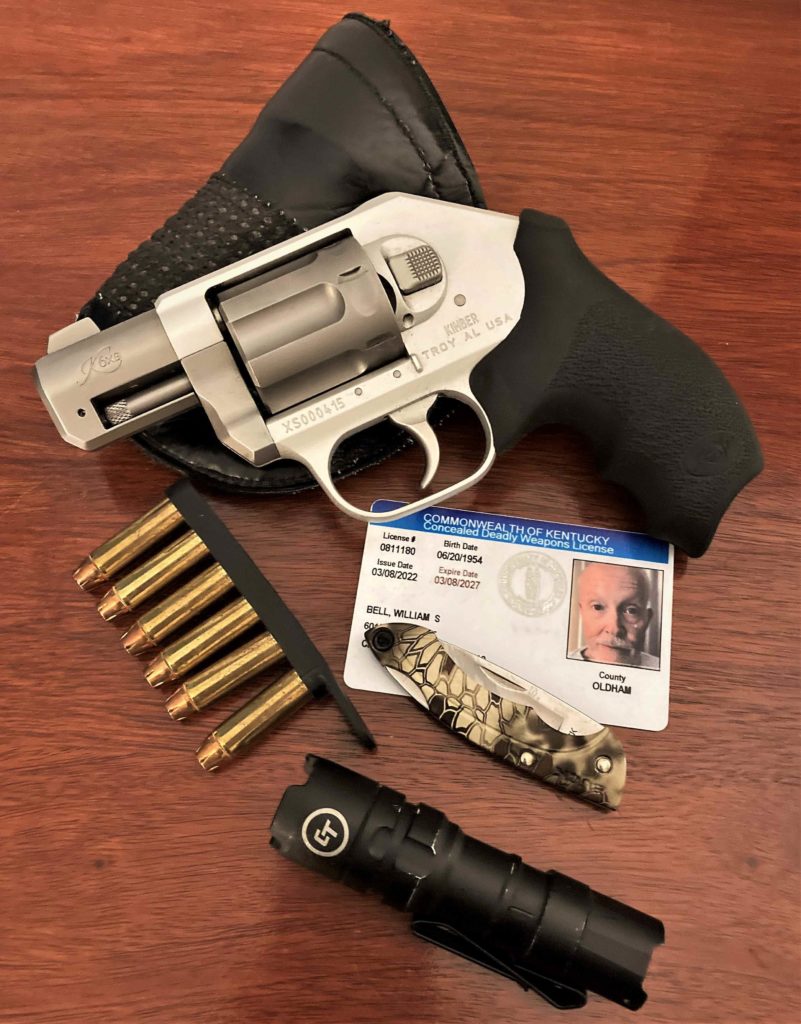
Kimber K6xs “Carry” Specifications
MECHANISM: Double action only revolver
CALIBER: .38 Special +P
CAPACITY: 6 cartridges
BARREL: 2.0”
OA LENGTH: 6.8”
EMPTY WEIGHT: 15.9 oz.
SIGHTS: Fixed notch rear, orange dot blade
FINISH: Silver KimPro II frame, bead-blasted barrel/cylinder
STOCKS: Hogue black rubber “Cobblestone” w/ finger grooves
MSRP: $679.00
Kimber K6xs .38 Special Performance
|
Cartridge |
Ave. Velocity |
Best Group |
Average Group |
|
Black Hills 100 gr. Solid Copper Honey Badger +P |
975 FPS |
3.16” |
3.31” |
|
Federal Punch 120 gr. JHP +P |
928 FPS |
1.29” |
2.10” |
|
Hornady Critical Defense Lite 90 gr. FTX |
926 FPS |
2.18” |
2.47” |
|
Speer Lawman 125 gr. Gold Dot JHP +P |
853 FPS |
2.07” |
2.51” |
|
Winchester Super-X 110 gr. JHP +P |
897 FPS |
1.93” |
2.56” |
NOTE: Bullet weight measured in grains, velocity in feet per second 10 ft. from the muzzle by an Oehler Model 35P chronograph, and accuracy in inches for three 5-shot groups at 36 feet.


